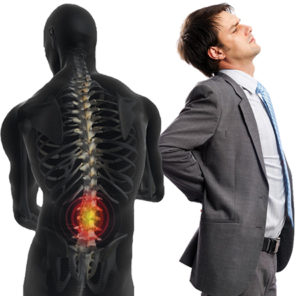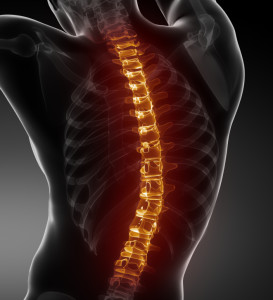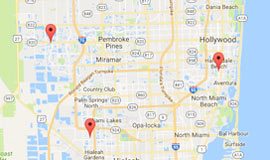More than 80% of people experience low-back pain at some point in their lives, and yet the syndrome seems to present itself differently for each patient.

Pain can come on suddenly, or gradually. It can be caused by a specific event, or by an unknown trigger.
Generally, it’s treated with conservative back pain therapy and a dose of education on what to do (and what not to do) to avoid future episodes.
The reason for the complexity has to do with the spine itself. The backbone, as it’s often called, is comprised of a tower of small bones, called vertebrae, stacked atop one another like chunky pancakes.
The spinal canal runs down the middle of this tower, protecting nerves that allow us to move our legs, bend forward, or perform any number of other motions. In between the bones are little cushions, called disks.
The disks are made of gelatinous material with a tough outer ring, and they can bulge or rupture as we age, pressing on nerves that may interfere with basic functions. To support this elaborate structure we have muscles, ligaments, and nerves . . . .
Well, you get the picture— pancakes with jelly in between them. Quite the support system, isn’t it?
For serious spinal anatomy, see this web page from the American Academy of Orthopaedic Surgeons.
So What Could Cause Back Pain?
Muscles are one source of low-back pain. Most of us recall all too well the soreness we felt after shoveling that big snowfall of the driveway, or the discomfort after that weekend we spent too much time working in the garden.
Muscle soreness may last a few days, but it’s different from disk pain, which can linger for weeks or even months. In those cases, the outer ring of the disk, called the annulus, can tear. The inner, jelly-like material may bulge and press on a nerve (herniated disk). If the vertebra is worn (disk degeneration), the bone may start to irritate adjoining tissues.
 Diagnosis Dictates the Back Pain Treatment Plan
Diagnosis Dictates the Back Pain Treatment Plan
Because of this complicated anatomy, it’s important to get a good diagnosis. X-rays are important for seeing bony structures. An MRI can depict muscles, nerves, and disks. The doctor may also order CT scans for a more detailed view of the spine.
We also need to discuss your symptoms. Is the pain worse while you lift something or bend over? Is it especially acute after you’ve been sitting for a while?
Does the pain radiate from your lower back into the buttocks area and down the leg? Do you have good days and worse days?
Pack pain treatment falls into one of three categories:
- Medication,
- Physical therapy,
- and Surgery.
Aspirin or acetaminophen are time-tested drugs with few side effects. Nonsteroidal anti-inflammatory drugs like ibuprofen and naproxen can help reduce pain and swelling. Narcotics are occasionally prescribed for acute pain. Steroids, either oral or injected, deliver a super dose of anti-inflammatory medication.
Physical therapy is valuable too, not only for relieving pain and re-establishing mobility but for teaching the patient how to avoid future episodes. There are passive therapies such as ice, heat, massage, ultrasound or electrical stimulation; and active therapies such as stretching, weight lifting, and cardiovascular exercise. An exercise program can help restore muscle strength to protect the spinal structures from future injury.
If conservative therapy has not helped after six months or more, the doctor may want to discuss surgery. Some types of low-back pain do not respond to surgical treatment; others do. If there’s one thing that’s certain about low-back pain, it’s this: Every case is unique.











